The yuan is strong, are other currencies okay?
Jennifer Johnson - 2025-02-14 16:59:31.0 456

At the beginning of February 2025, the yuan ushered in a strong rebound, quickly recovering from 7.35 to the 7.30 mark.
This wave of gains not only marks a significant recovery in the renminbi, but also triggers market attention to the movements of other currencies around the world.
Does a stronger renminbi mean that other major currencies are also rising?

The renminbi exchange rate skyrocketed
On 3 February, the offshore renminbi bottomed out. At the beginning of the session, the exchange rate quickly fell to the key point of 7.36, which is close to the low level in decades.
On Feb. 4, Trump imposed tariff orders. The renminbi rose 600 points during the day.
As of February 5, the offshore yuan was 7.28, an increase of more than 200 points!
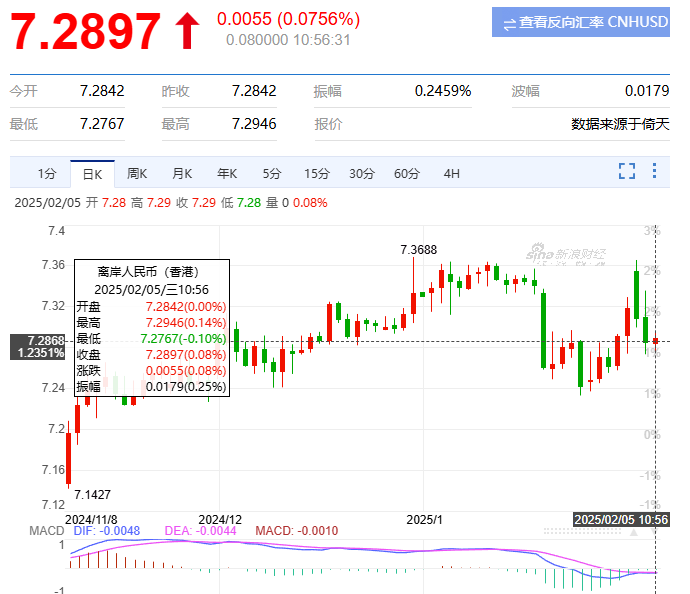
Source: Sina Finance
The yen may continue to strengthen
Affected by the Bank of Japan's interest rate hike, the yen continued to strengthen against the yuan.
In less than three trading days this week, the yen has risen more than 1.17% against the yuan, and as of February 5, the yen was trading at 0.0475 against the yuan.
In the short term, the BOJ expects the BOJ to continue raising interest rates until it exceeds the current market pricing, thus driving the continued strength of the yen.
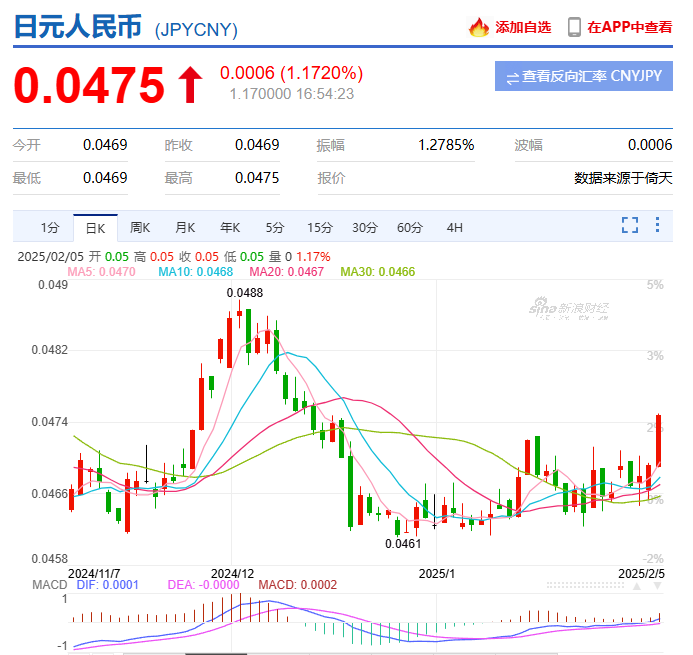
Source: Sina Finance

The Australian dollar has risen for many days
Over the past few days, the Australian dollar exchange rate has been extremely volatile.
The Australian dollar recovered against the Chinese yuan on February 4 after Trump agreed to give them a one-month reprieve after high-level talks with Mexico and Canada.
As of 5 February, the AUD/CNY exchange rate was 4.54 and showed an upward trend.
Experts say it's hard to predict how Trump's policy debates will hurt Australia's economy and currency, noting that the U.S. economy is at greater risk.
In addition, the likelihood of the RBA considering a rate cut in February has increased, and the Australian dollar is also likely to depreciate further.
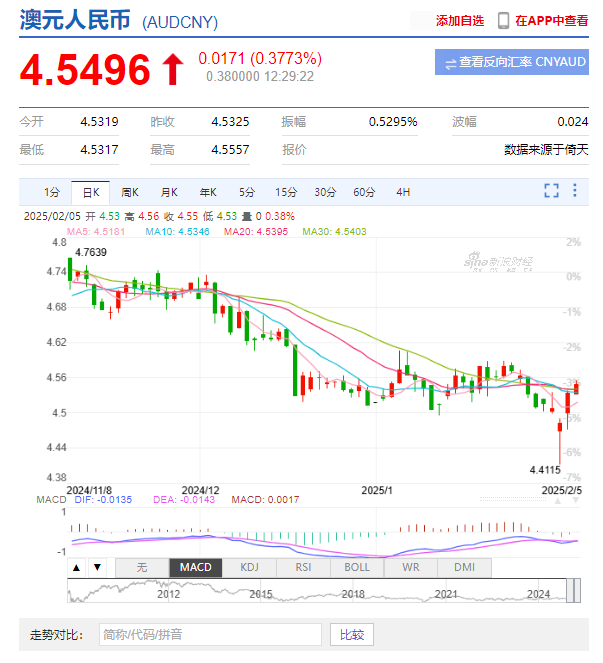
Source: Sina Finance

The Hong Kong dollar rose slightly
With the deepening of global economic integration, the exchange rate trend between the RMB and the Hong Kong dollar has also attracted close attention.
As of 5 February, the exchange rate of the Hong Kong dollar against the renminbi was 0.93, showing a slight upward trend.
However, the stability of the Hong Kong dollar exchange rate depends on the intervention of the Hong Kong Monetary Authority, so the fluctuation of the Hong Kong dollar in the short term is relatively small.
Overall, the appreciation of the renminbi has little impact on the trend of the Hong Kong dollar.
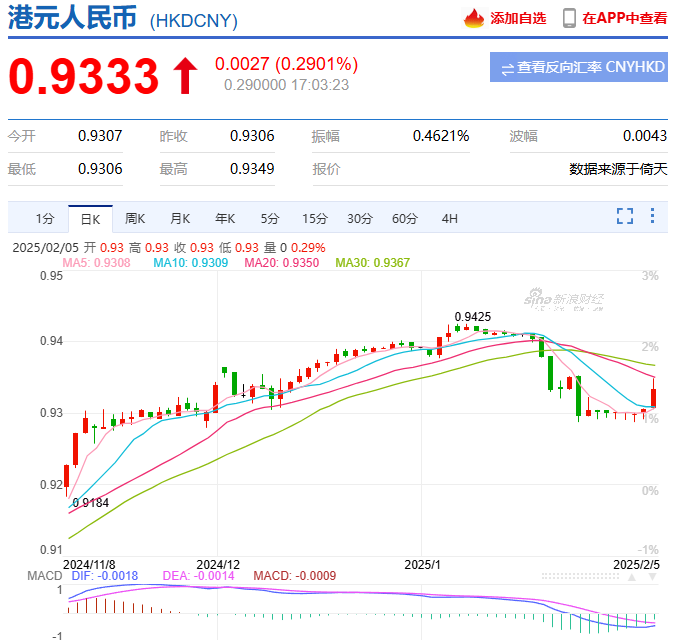
Source: Sina Finance

The Singapore dollar has risen significantly
On 3 February, the Singapore dollar exchange rate fluctuated violently in response to the tariff news.
As of 5 February, the SGD/RMB exchange rate was 5.97, showing a clear upward trend.
On the one hand, Trump's tariff policy could trigger an escalation of global trade tensions.
On the other hand, Singapore's economy is highly dependent on foreign trade, and the Singapore dollar is fluctuating due to trade uncertainty.
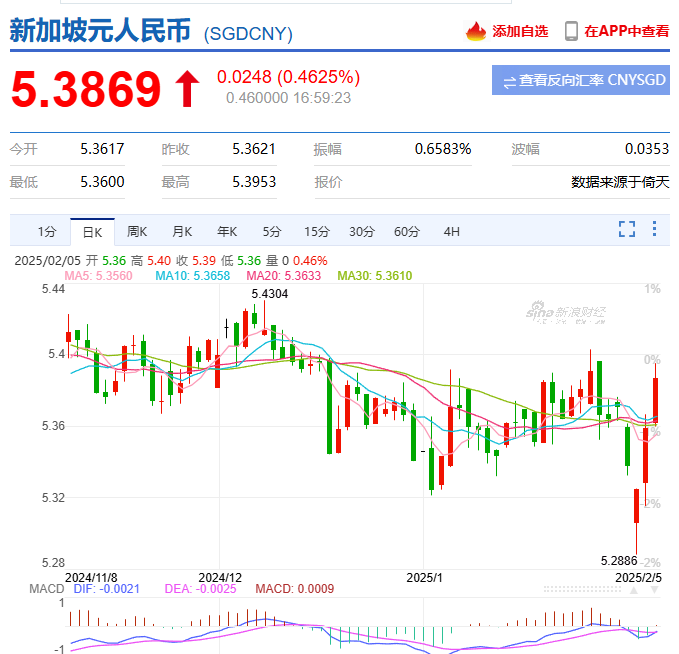
Source: Sina Finance

The trend in the New Zealand dollar is stable
On February 3, affected by Trump's tariff order, the central exchange rate of the New Zealand dollar against the yuan fell below 4 to 3.9736, hitting a new low in nearly a year and then gradually recovering.
As of Feb. 5, the NZD/CNY exchange rate climbed to 4.12.
Experts speculate that the New Zealand dollar will not fluctuate significantly, and the overall exchange rate trend will stabilize.
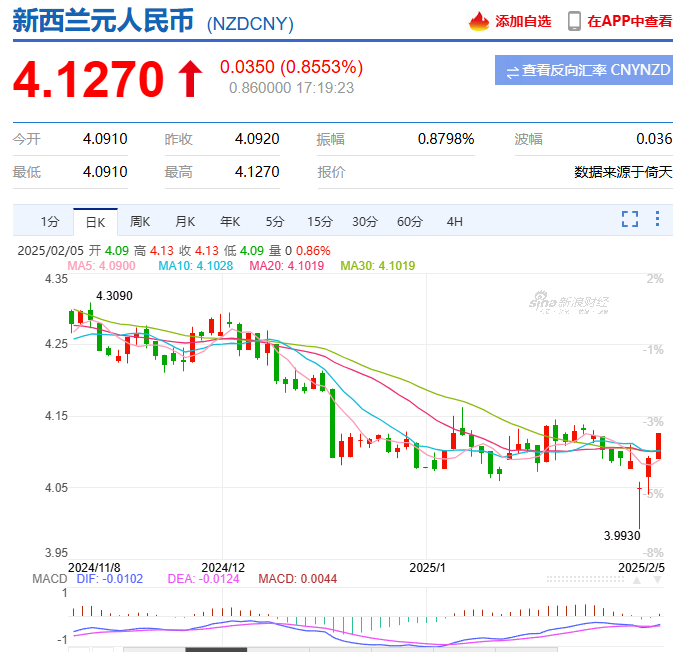
Source: Sina Finance

The euro briefly rose
On 3 February, the euro fell sharply, with the lowest exchange rate of the euro against the yuan at 7.39, the lowest level since the beginning of 2020.
It then continued to rise, and as of February 5, the euro was trading at 7.56 against the yuan.
This week, the euro exchange rate briefly strengthened, and from the overall exchange rate point of view, the euro exchange rate showed a continued weakening trend.
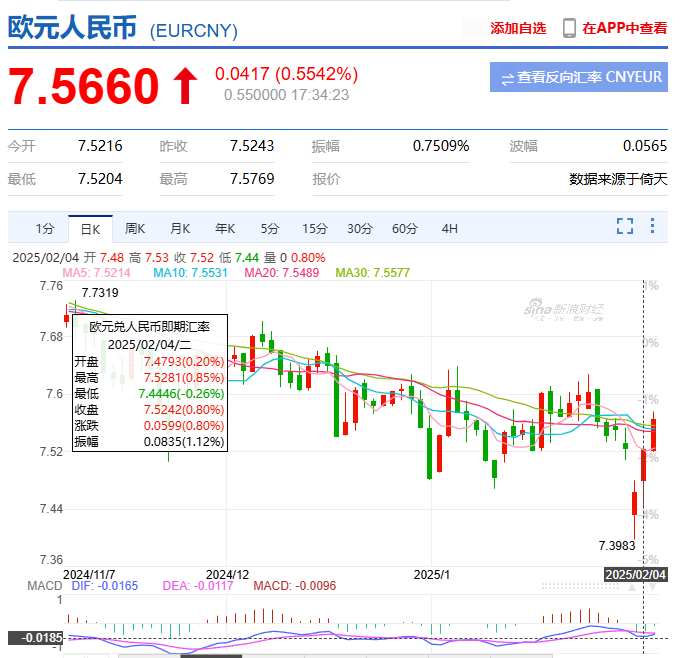
Source: Sina Finance

The US dollar continues to weaken
The decline of the US dollar has intensified and has become a hot topic in the international financial market.
On 5 February, the DXY was particularly eye-catching, falling 0.43% to just 107.84.
In 2025, the Fed will maintain a lower interest rate policy, and the strong position of the dollar will be challenged to some extent.
In addition, Trump's tax hike on February 4 could lead to a slowdown in U.S. economic growth.
In this situation, the strong position of the dollar is threatened, and capital begins to flow out of dollar assets and into other currencies.
Looking back at last week, the dollar stabilized the 10-week moving average and rebounded, and the dollar index returned to above 108, but generally showed a downward trend.

Source: Sina Finance

The Canadian dollar continues to rise
This week, the Canadian dollar exchange rate continued to rise.
On February 3, the Bank of Canada closed at 4.97 against the Chinese yuan on Monday, and the Canadian dollar fell to its lowest level in nearly 5 years!
On 4 February, the Bank of Canada cut its policy rate by 25bp to 3%, briefly recovering to 5.02.
Then the trade war was stopped, and the Canadian dollar quickly rallied and turned to rise, and as of February 5, the Canadian dollar leveled off at 5.08 against the yuan.
Economists warn: While the US has suspended "punitive tariffs" on Canadian goods, the Canadian dollar remains weak, which could be a precursor to a recession!
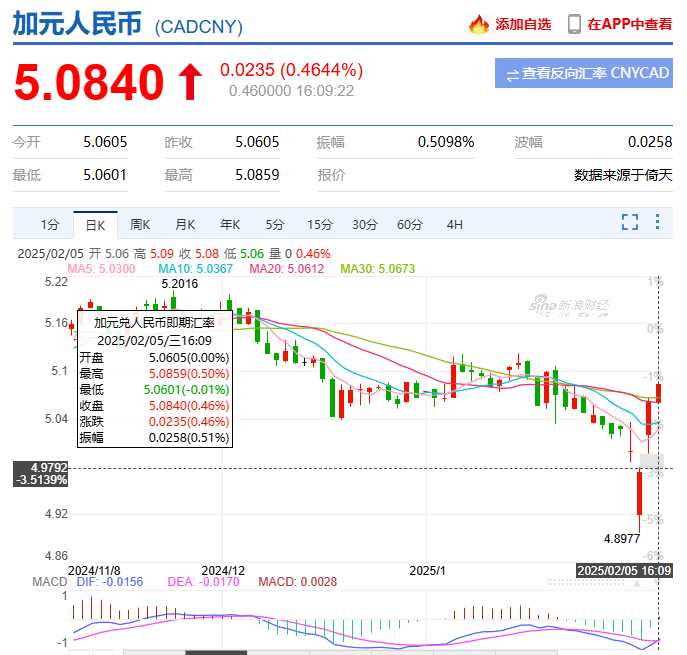
Source: Sina Finance
The exchange rate of the renminbi has fluctuated greatly with Trump's tariff policy and will have a significant impact on the global currency market.
In terms of future trends, global uncertainty caused by trade conflicts may lead to fluctuations in world currencies.
So whether the exchange rate of various countries can rise to a high point in the next few weeks, you can pay attention to the exchange rate reminder of Panda Remittance, so that you can pay attention to the first-hand exchange rate information at any time~
Panda Remit, the choice of millions of users worldwide, provides safer, more convenient, more reliable and more affordable cross-border remittance services.
It now covers more than 50 countries/regions and dozens of currencies, and supports more than 500 banks and major wallets such as Alipay, WeChat and PayPal.
Panda Remit can meet your multiple remittance needs, including global remittance, large-value remittance, remitting RMB from China and tuition payment.
Panda Remit offers the industry's best exchange rates and lowest fees to ensure the safety of your funds, and have been certified by PCI DSS. With our global presence and regulatory compliance, you can enjoy a convenient service 24/7 during the remittance process.
Visit Panda Remit website/APP to enjoy the new experience of global remittance, more money arriving at faster speed!




